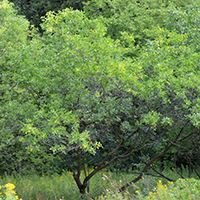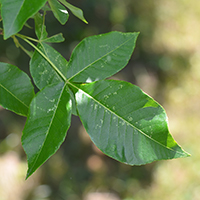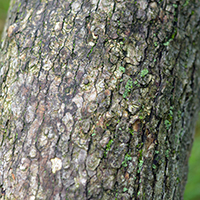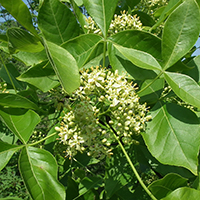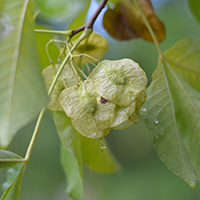What common hoptree looks like
Size and shape
- Reaches 8 metres high.
- Trunk reaches up to 15 centimetres in diameter.
Leaves
- Dark green with 3 leaflets (10 to 15 centimetres) on central stalk.
- Underside is covered in transparent dots.
Bark
- Reddish-brown and smooth.
- Becomes rough with age.
Flowers
- Small greenish-white flowers that grow in clusters.
- Bloom in June.
Fruit
- Flat, 1- or 2-seeded winged keys (25 millimetres) grow in dense clusters.
- Stay on the tree for most of winter.
Where common hoptree is found
Common hoptree is a species at risk in Ontario. Its range is limited to Southwestern Ontario near Lake Erie.
Find out what we are doing to protect common hoptree by reading the recovery strategy.
What you need to know to grow common hoptree
- Moisture: grows best in moist to dry sites.
- Soil: usually grows on nutrient-poor sand, but also grows on thin soils overlying limestone.
- Shade: requires full sun to flower but tolerates part shade.
Benefits and uses of common hoptree
Wildlife benefits
Several insects, including some provincially rare ones, rely on common hoptree for food, including beetles and moths, and butterflies that seek out its nectar. Due to their bitter taste, few species consume common hoptree fruits.
Commercial uses
Common hoptree has little commercial value but was historically used as a substitute for hops when brewing beer.
Fun facts about common hoptree
- Common hoptree is one of two native host plants for giant swallowtail butterfly larvae.
- When crushed, common hoptree leaves smell like citrus.
Updated: January 10, 2024
Published: October 21, 2014
